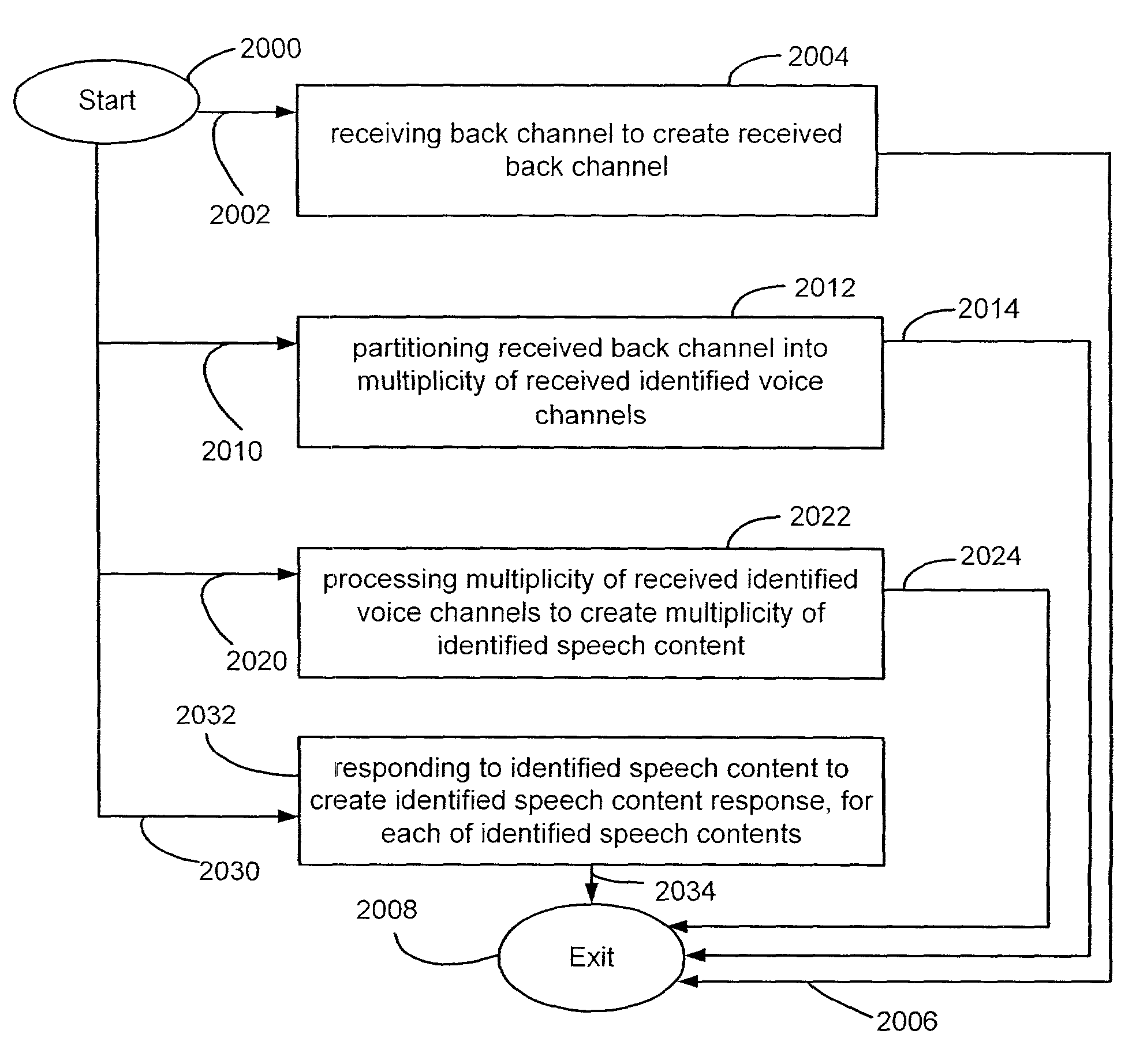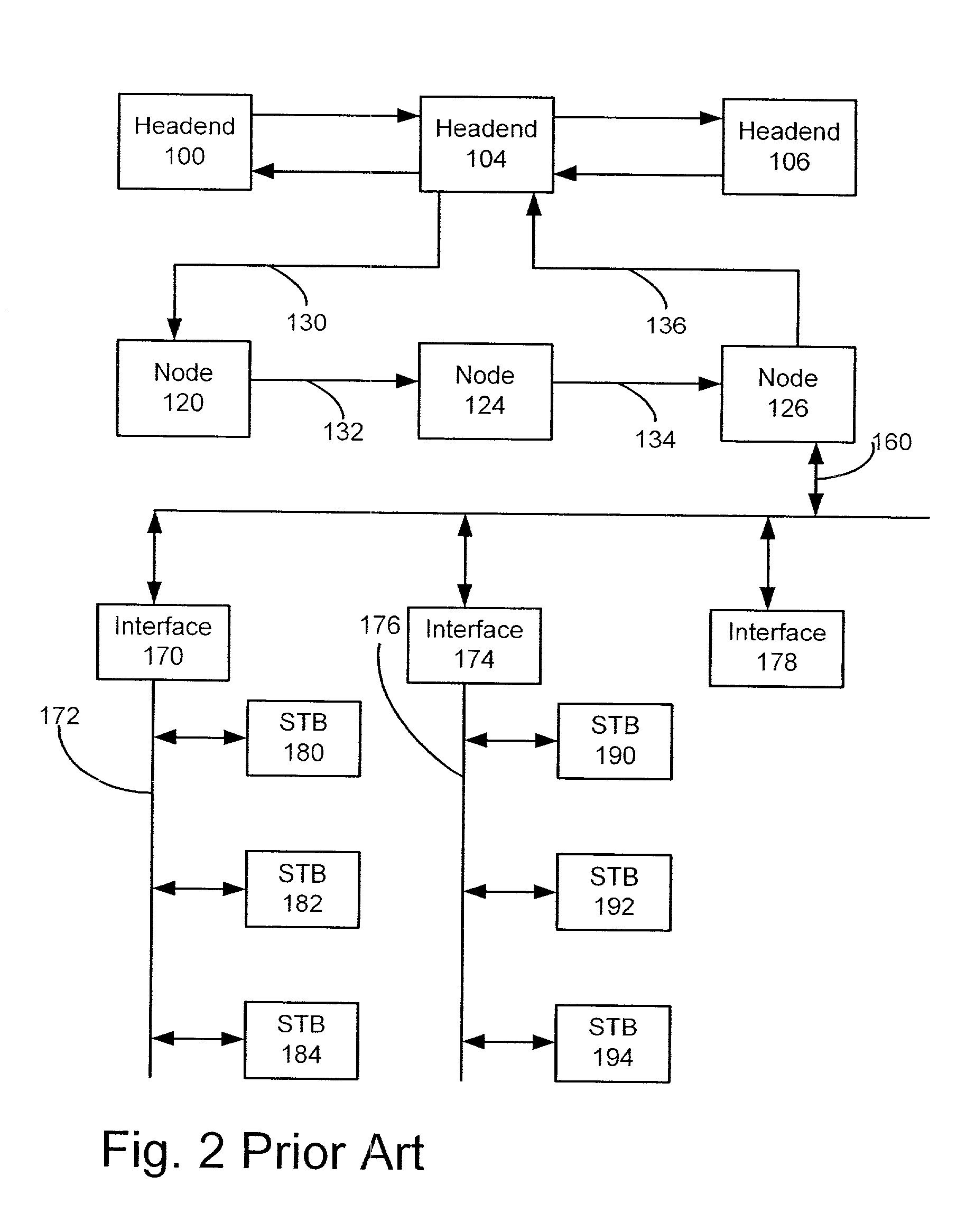System and method of voice recognition near a wireline node of a network supporting cable television and/or video delivery
a voice recognition and network technology, applied in the field of voice recognition performed near a wireline node of a network supporting cable television and/or video delivery, can solve the problems of speech recognition at a centralized wireline node in a network supporting video delivery or cable television delivery that have not been addressed, and the provision for upstream data transmission, i.e. from subscriber to cable plant, is much more restrictive, etc., to achieve fast and accurate speech navigation, improve the recognition accuracy, and reduce la
- Summary
- Abstract
- Description
- Claims
- Application Information
AI Technical Summary
Benefits of technology
Problems solved by technology
Method used
Image
Examples
Embodiment Construction
[0106]FIG. 3 depicts a remote control unit 1000 coupled 1002 to set-top apparatus 1100. Set-top apparatus 1100 communicates via a two-stage wireline communications system containing a wireline physical transport 1200 to a distributor node 1300. Set-top apparatus 1100 communicates through distributor node 1300 across a high-speed physical transport 1400 to a tightly coupled server farm 3000, possessing various delivery points 1510 and entry points 1512–1518. Tightly coupled server farm 3000 contains one or more gateways 3100, and one or more tightly coupled server arrays 3200.
[0107]As used herein, a server farm refers to a collection of at least two server components communicatively coupled to one another. The server components may or may not all be directly communicatively coupled to each other. A server component refers to at least a gateway, server array, server computer, database engine, or disk farm.
[0108]As used herein, gateway refers to at least one of the following: A gateway...
PUM
 Login to View More
Login to View More Abstract
Description
Claims
Application Information
 Login to View More
Login to View More - R&D
- Intellectual Property
- Life Sciences
- Materials
- Tech Scout
- Unparalleled Data Quality
- Higher Quality Content
- 60% Fewer Hallucinations
Browse by: Latest US Patents, China's latest patents, Technical Efficacy Thesaurus, Application Domain, Technology Topic, Popular Technical Reports.
© 2025 PatSnap. All rights reserved.Legal|Privacy policy|Modern Slavery Act Transparency Statement|Sitemap|About US| Contact US: help@patsnap.com



